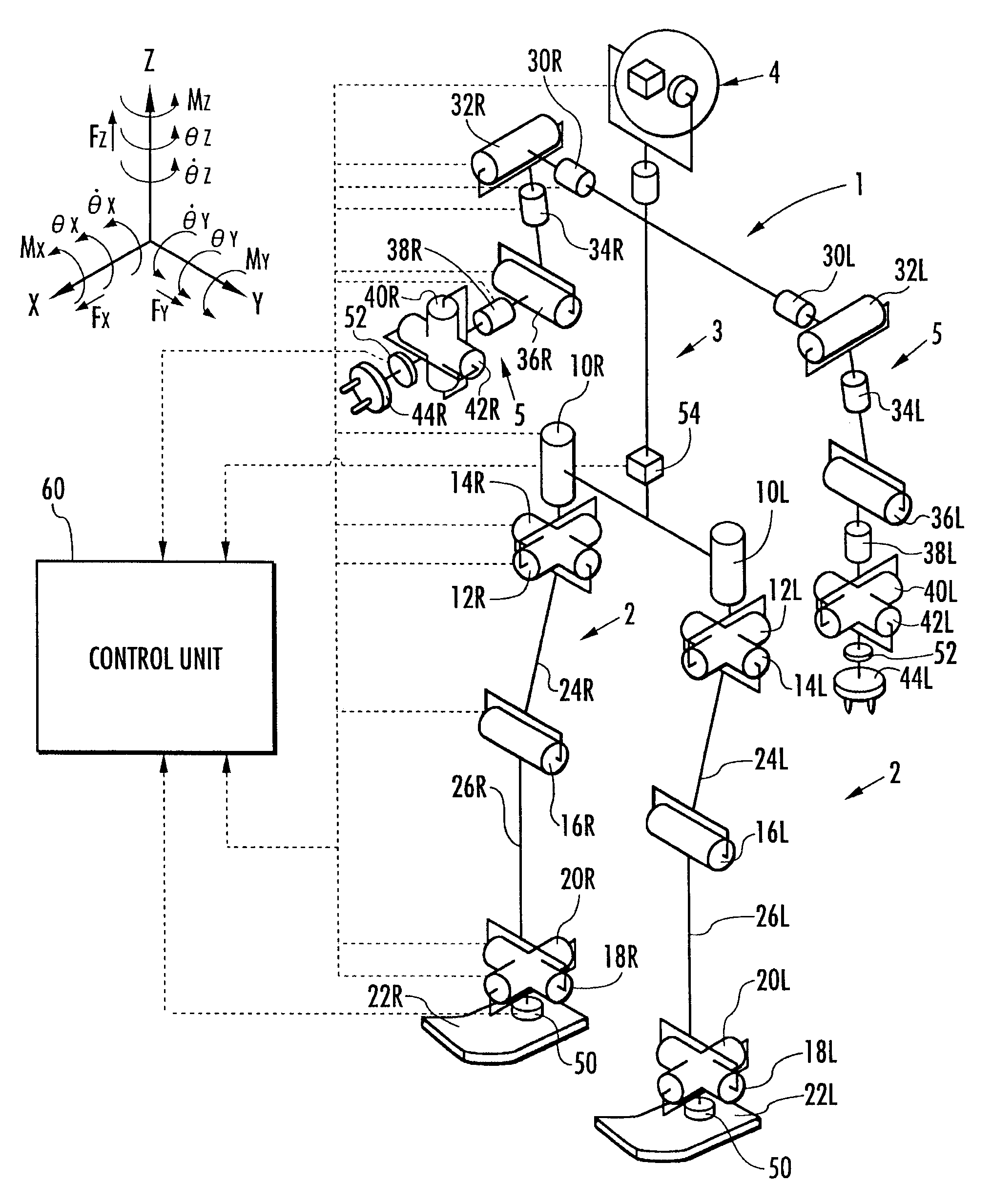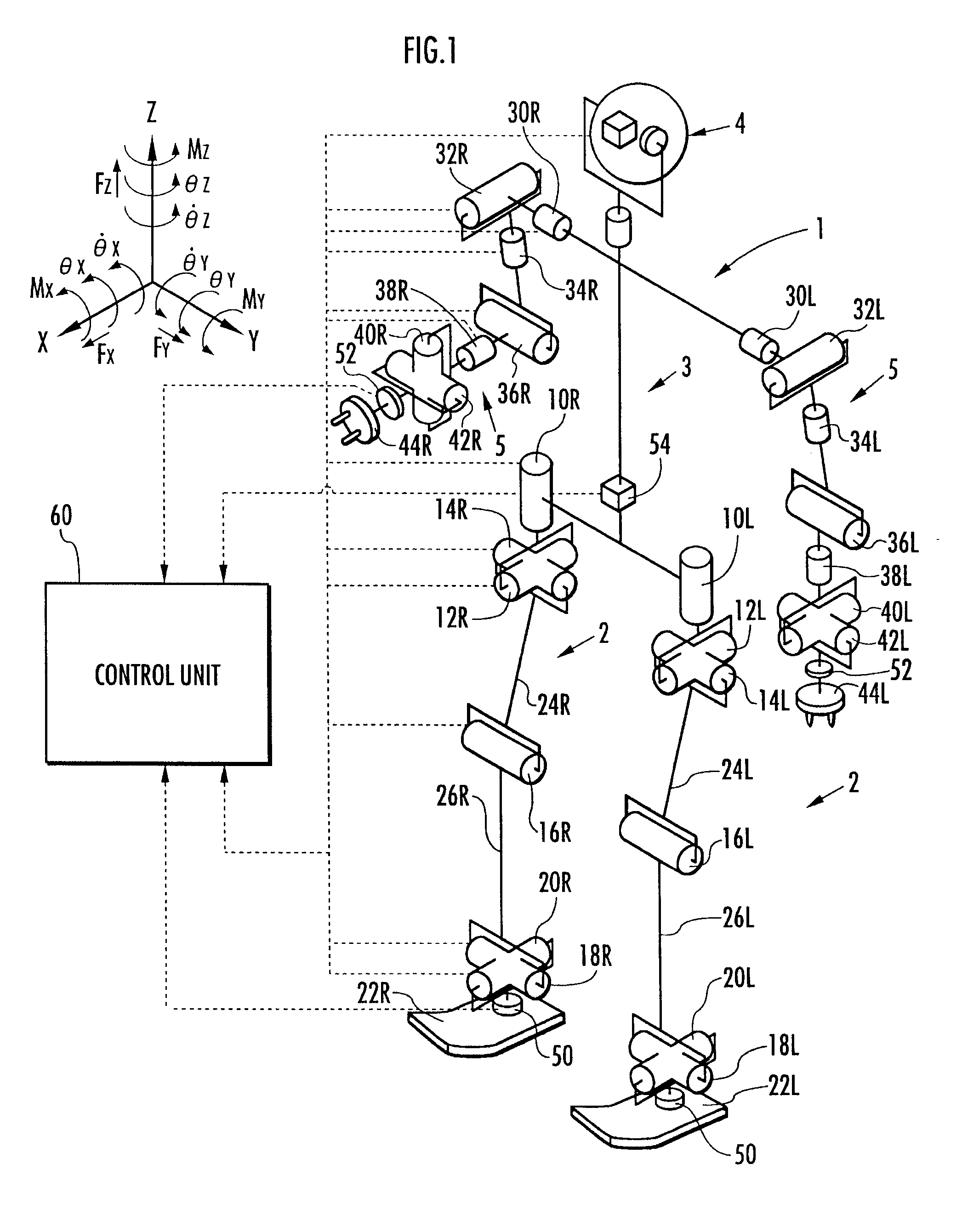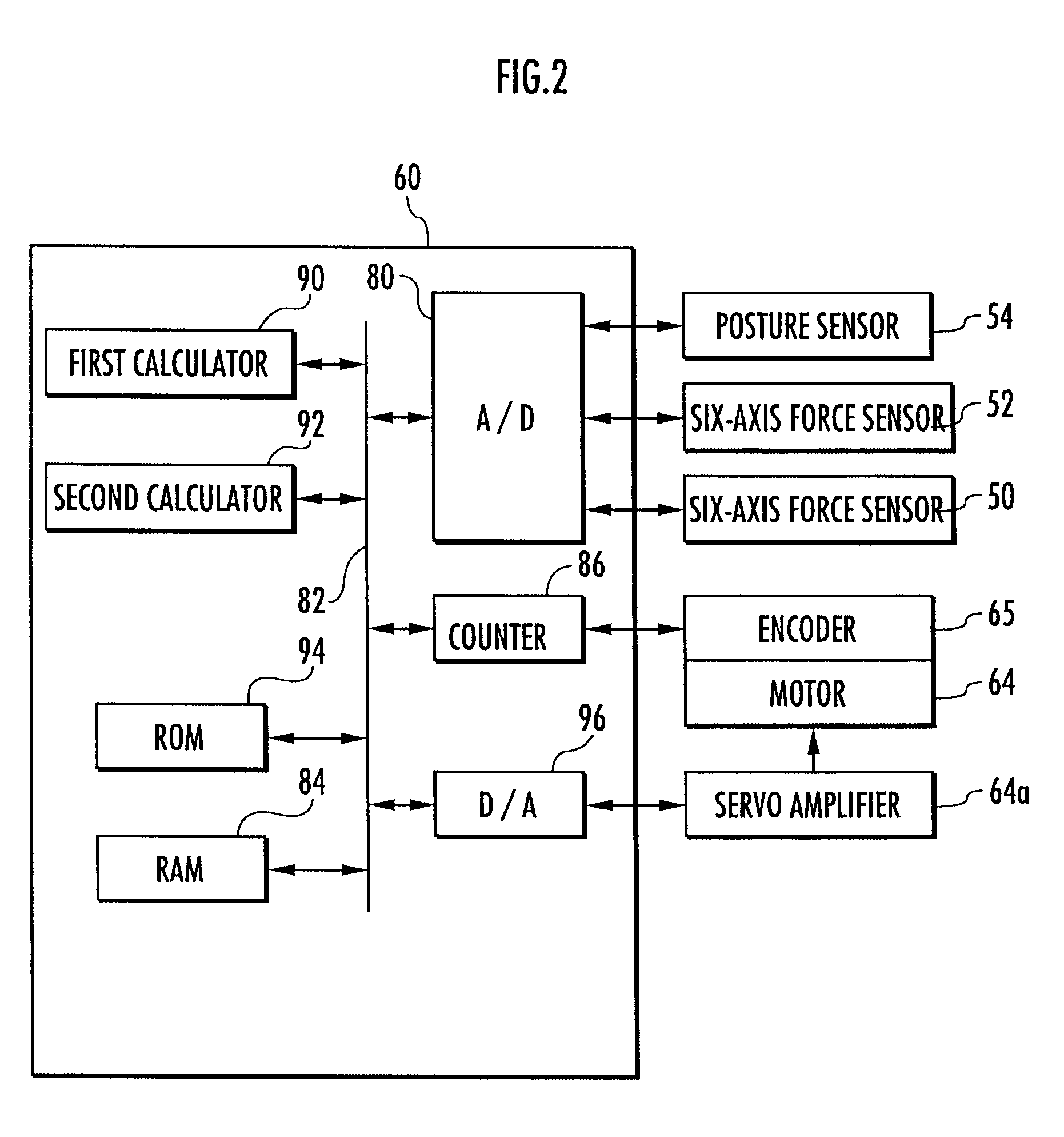Gait Generating Device Of Legged Mobile Robot
a mobile robot and generating device technology, applied in the direction of electric programme control, program control, instruments, etc., can solve the problems of inability to immediately correct the posture of the robot to a stable position, the object reaction force acting on the robot does not necessarily agree with the desired object reaction force, and the robot's stability tends to be impaired
- Summary
- Abstract
- Description
- Claims
- Application Information
AI Technical Summary
Benefits of technology
Problems solved by technology
Method used
Image
Examples
first embodiment
[0049]The following will explain in detail a gait generating device 100 according to a first embodiment of the present invention. FIG. 5 to FIG. 8 show flowcharts that illustrate the processing by the gait generating device 100. The calculation processing function of the gait generating device 100 includes a first acting force trajectory determining means, a first leg motion parameter determining means, a second acting force trajectory determining means, and a discriminating means in the present invention.
[0050]The gait generating device 100 sequentially carries out the processing shown in the flowcharts of FIG. 5 to FIG. 8 at a predetermined calculation processing cycle.
[0051]First, in S01, a moving schedule for an object 120 is determined. The moving schedule to be determined here includes at least a moving schedule for the object 120 for a predetermined future period (for a plurality of steps of the robot 1) from the current time. The moving schedule is decided basically accordin...
second embodiment
[0250]A second embodiment of the present invention will now be explained with reference to FIG. 23 to FIG. 25. In the explanation of the second embodiment, like constituent parts or like functional parts as those of the first embodiment will be assigned like reference numerals as those in the first embodiment and the explanations thereof will be omitted.
[0251]FIG. 23 is a flowchart illustrating a part of the processing by a gait generating device 100 in the second embodiment, the part being the processing of a portion corresponding to the processing in FIG. 5 related to the first embodiment. As shown in FIG. 23, the second embodiment differs from the first embodiment only in the processing carried out when a determination result in S19 is NO.
[0252]More specifically, in the first embodiment, if the determination result in S19 is NO, then a desired object reaction force trajectory has been corrected; instead, in the second embodiment, the predicted landing position / posture or the pred...
PUM
 Login to View More
Login to View More Abstract
Description
Claims
Application Information
 Login to View More
Login to View More - R&D
- Intellectual Property
- Life Sciences
- Materials
- Tech Scout
- Unparalleled Data Quality
- Higher Quality Content
- 60% Fewer Hallucinations
Browse by: Latest US Patents, China's latest patents, Technical Efficacy Thesaurus, Application Domain, Technology Topic, Popular Technical Reports.
© 2025 PatSnap. All rights reserved.Legal|Privacy policy|Modern Slavery Act Transparency Statement|Sitemap|About US| Contact US: help@patsnap.com



